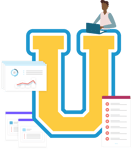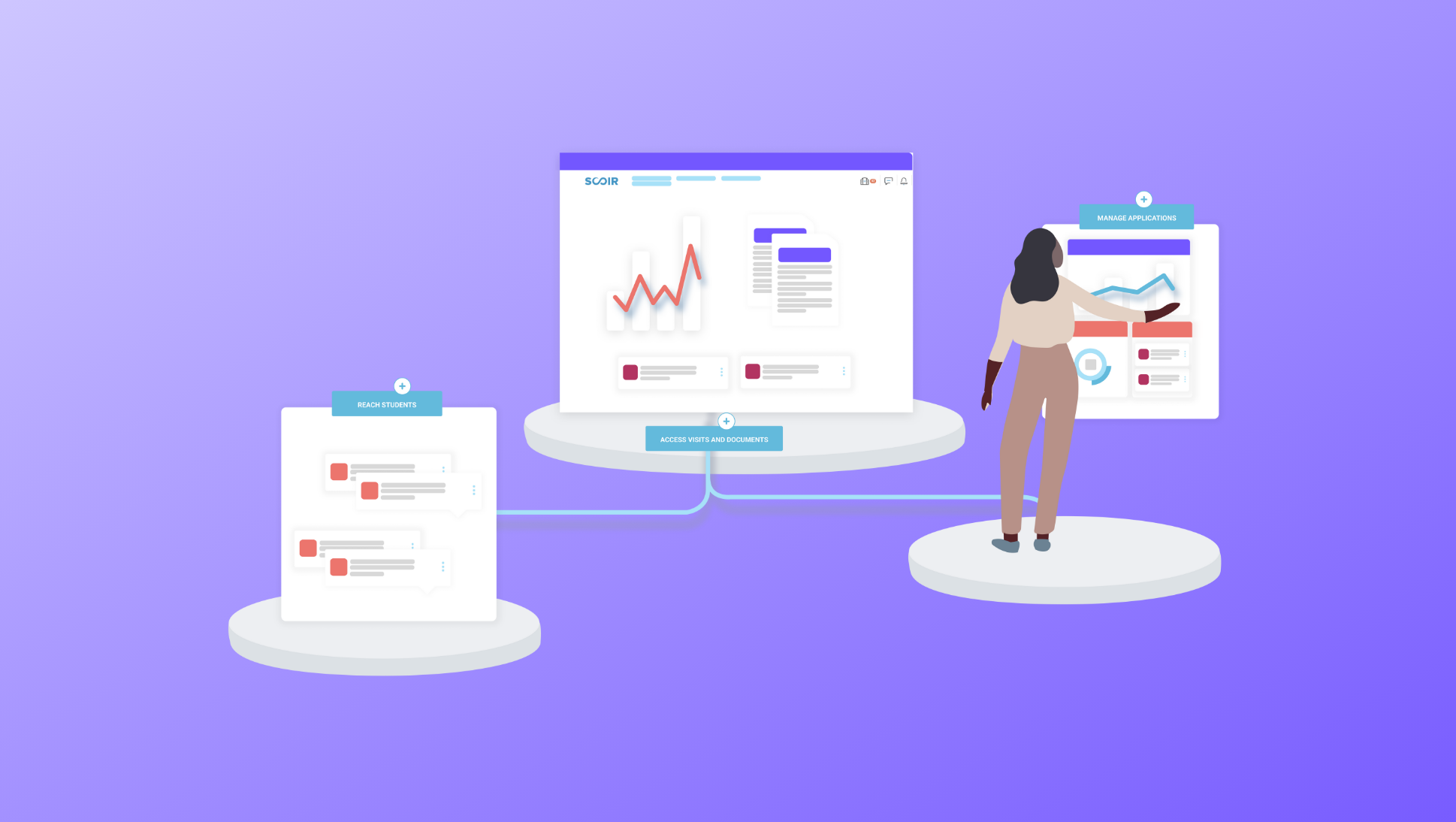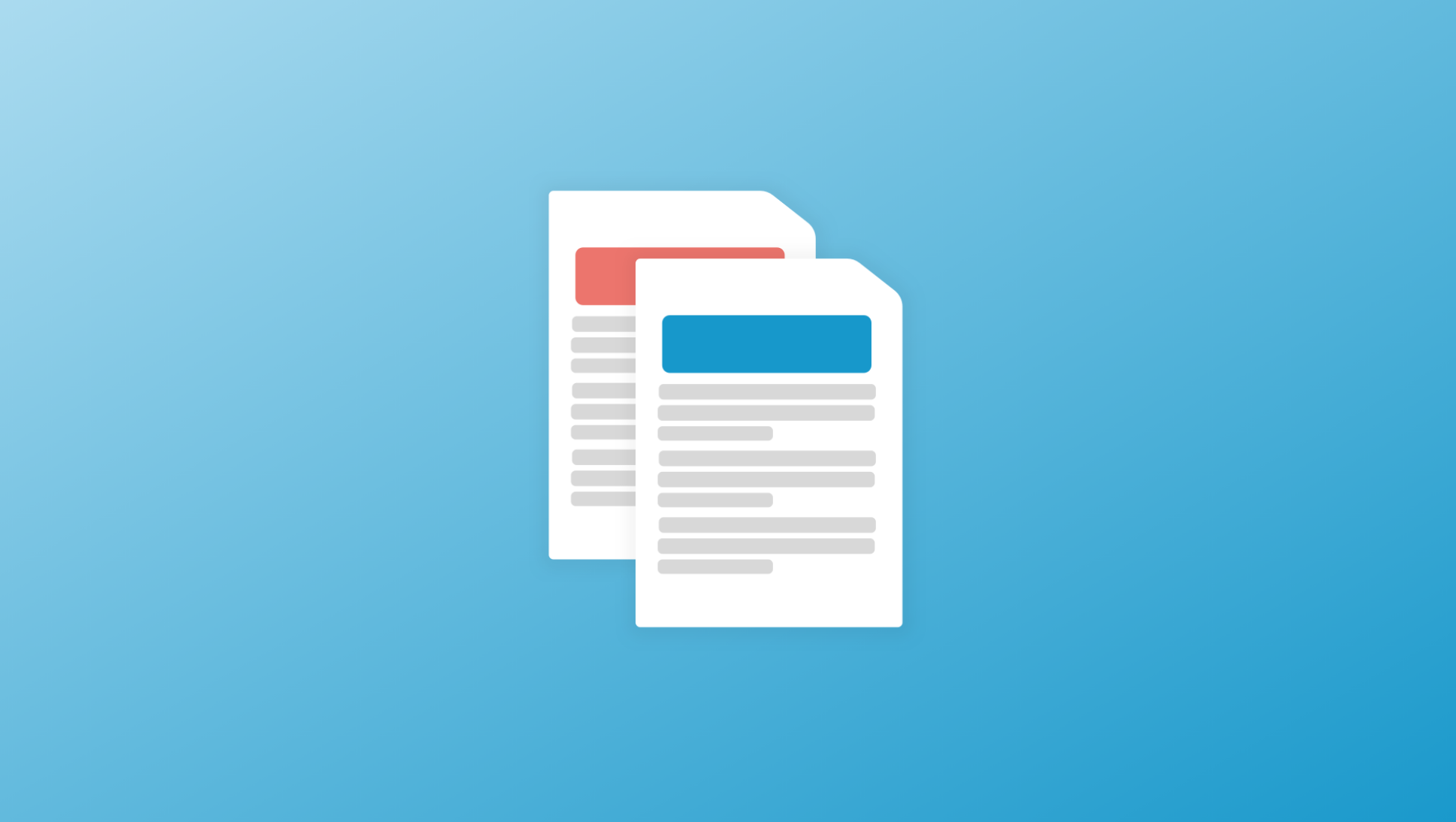3 min read
Strategies for Choosing Your High School Courses [Podcast Recap]
This article is a recap of an episode from our podcast: Course Selection: Strategies for Choosing Your High School Courses. Are you a junior or...
Scoir is free for your students and for you. We also offer Advanced Solutions to help you better guide your students.
Access resources in the areas of test prep, essay support, and financial aid to better navigate every part of the admissions process.
We offer a flat 50% discount for each student who receives free or reduced lunch in your school or district.
Enjoy Career Readiness Early Access for grades 6-8, built to help you guide students and track progress in the early years of career learnings and activities.

Career development (certifications, courses & curriculum) for changemakers.
Check out content and practical guides to help inform your enrollment strategies and programs.
4 min read
 Julie Kampschroeder
:
May 18, 2020
Julie Kampschroeder
:
May 18, 2020

If you’re planning to attend college, it’s likely that you’ll need to consider borrowing money to do so. The idea of borrowing money can be intimidating and overwhelming, but it shouldn’t scare you away from college entirely. Roughly sixty-nine percent of students take out loans in order to attend college. When you understand the types of loans that are available to you versus those that are available to your parents, you can be sure that you are setting yourself up to graduate with an education you are proud of and manageable amount of debt.
Whether you need help paying for college or not, everyone should fill out the FAFSA form. Filling out the FAFSA qualifies you for federal grants, state grants, low-interest federal loans, work-study, state loans, college/institutional loans, and college/institutional grants & scholarships (you can read about those types of aid here, as we’ll just be discussing loans in this article).
You must fill the online form out using tax information from prior-prior tax year to find out if you are eligible for a Federal Subsidized Student Loan. If you qualify, you will find this loan type listed on the individual financial aid packages you receive from the colleges you are accepted into. (Check out a sample financial aid award letter). The Subsidized Direct Loan will be listed on your individual college financial aid packages if you qualify. There are also Federal Unsubsidized Loans, which all students are eligible to receive.
What is the difference between the two? The Federal government pays the interest on a subsidized loan while you are in college and does not begin accruing interest until 6 months after you leave college (leave, not graduate. You must still pay these loans back whether or not you decide to complete your degree). Unsubsidized loans accrue interest while you are in college and you will begin paying this loan back 6 months after leaving college, as well.
The Federal Government financially guarantees Direct Subsidized and Unsubsidized Loans. Students do not have to pass a credit check nor do they need a cosigner for these loans. The government will take on the risk of loaning a young person, with no credit rating or money for college.
You are allowed to borrow $5,500 during freshman year, $6,500 during sophomore year, and $7,500 during junior and senior year. Unaccompanied youth may take out more in loans; however, remember you will have a much higher monthly payment if you do so. The above amount totals $27,000.
Suppose you receive and accept the full amount of $27,000 in federal loans. How much can you expect to owe on a monthly basis after leaving college? We’ll break it down for example purposes. First, it’s important to note that Federal Direct loans charge a loan fee for taking out the loan. If we add the loan fee it will total $28,400. At 4.66% interest rate, you will pay $297 a month, for 10 years until you repay your student loan. The original loan plus interest totals $35,583. You paid back the money PLUS $7,183 in interest. This is just for example purposes and will depend upon your individual financial aid package.
This is a Parent PLUS Loan. If your college does not meet your ‘financial need’ and there is a ‘gap’ (amount between your EFC and the actual aid your college can award you) that still needs to be met, a college will offer your parent a loan in ADDITION to your student loans. The parent WILL have to pass a credit check to receive this loan. Keep in mind, they will need to do this EVERY year. I work at a Title 1 high school where all my students receive Free Lunch and Breakfast. I never advise my parents to take this route, even if they pass the credit check because most families are living paycheck to paycheck and this option is just not feasible.
Federal Direct Loans are backed by the government and have a fixed interest rate. Private Student Loans can be taken out at a bank, credit union, state agency or at the college/institution you will be attending. You will need to pass a credit check and have an adult cosign the loan. The interest rate is probably not fixed and CANNOT be consolidated when you leave college. This means you would have your $297 a month payment we just talked about PLUS another payment (or two, depending on how many private loans you take out).
How much do you believe you will earn in your first job out of college? If you owe $600-$1,000 a month in student loans, you will have difficulty paying your living expenses after college. This is NEVER a good idea for undergraduate school.
The financial aid package will typically arrive in your college account. You will have the option to accept or deny each offering on the aid package. Once you accept the Direct Loans, you will have to:
It is a sort of mini class to help you understand your obligation to repay the loan. Student loans are Full Recourse meaning you WILL pay back the loan, even if you do not finish college. The Federal government can and will garnish your paychecks/social security if you try not avoid loan payments. Payments begin 6 months after leaving college.
The master promissory note is something you will sign online saying you agree to the terms of the loan. This is when you admit you know you must pay back the loan regardless of earning the degree or not.
Trying to avoid your loan payments will simply result in high late fees and can add up very quickly! Be sure you understand your loan commitment and know if you are signing for a Federal or Private Student Loan. It will make a huge difference in the rest of your financial future! I highly recommend discussing this with your high school Counselor because of the long term ramifications to your financial future.
If you're a high school junior, now is the perfect time to start "wrapping your brain around" the financial part of the college process. Take time to learn about what your options are so that you are better positioned when it comes time to make a decision.
To learn more about financial aid, check out our blog post Inside the Financial Aid Process: A Guide for Students and Parents.

Julie Kampschroeder has over three decades of experience working with high school students. She is passionate about assisting First Generation/Low Income College Bound students. Julie currently works as a public school counselor in a diverse high school in St. Louis, Missouri. Early in her career she volunteered countless hours with the Missouri Association of College Admission Counselors (MOACAC) and earned both the President’s Service Award (2008) and Peggy Clinton Lifetime Service Award (2012). As a First Generation College student herself, growing up in a small town, she is most proud of the National Association of Admissions Counselor Inclusion, Access and Success Award (2013). Maya Angelo’s motto of “when you know better, you do better” guides her work in educating First Generation students to level the playing field in college admissions.
![Strategies for Choosing Your High School Courses [Podcast Recap]](https://www.scoir.com/hubfs/Course%20Selection%20Strategies%20for%20Choosing%20Your%20High%20School%20Courses%20%5BPodcast%20Recap%5D.png)
3 min read
This article is a recap of an episode from our podcast: Course Selection: Strategies for Choosing Your High School Courses. Are you a junior or...

15 min read
Hey there, counselors! 👋

7 min read
As part of your college application process, many colleges will require an admissions essay. This is your opportunity to highlight your strengths,...